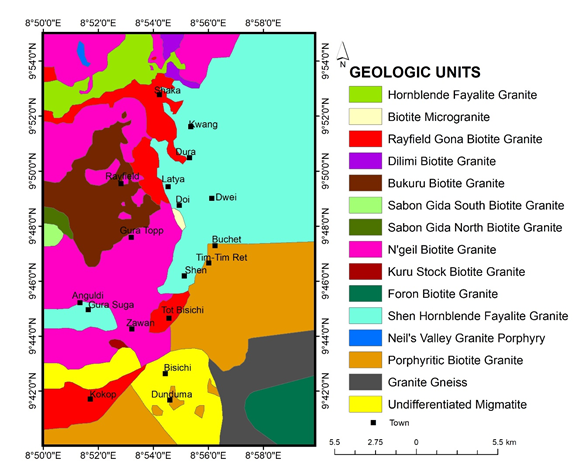Characterization of mine spoils for the reclamation of degraded lands of the Jos-Bukuru tin field, central Nigeria
Keywords:
Degraded lands, Geochemical, Geotechnical, Mine spoils, ReclamationAbstract
Tin mining operations on the Jos Plateau have left a lasting impact on the environment, resulting in derelict land, mine spoils, and over a thousand abandoned mining ponds. These ponds have become potential hazards, endangering unsuspecting members of the public. This study aims to provide a comprehensive geochemical and geotechnical characterization of the mine spoils to assess their suitability for the reclamation and restoration of the degraded mined lands. The geochemical analysis reveals that the mine spoils exhibit a strong to moderate level of acidity, with a pH range of 3.91 to 5.90 (average: 4.85). Furthermore, they display deficiencies in essential nutrients such as phosphorus (average: 0.02%) and potassium (average: 0.31%), as well as trace elements such as copper (average: 19.15 ppm), manganese (average: 165.15 ppm), and zinc (average: 53.24 ppm). Notably, the mine spoils are enriched in iron (average: 6.31%). These findings highlight the inadequate presence of both micronutrient and macronutrient elements necessary for successful revegetation which is a crucial component of reclamation. Results from the geotechnical tests indicate that the mine spoils possess an average fines content of 56.03%, a mean liquid limit of 38.06%, and a mean plasticity index of 15.52%. Additionally, the average linear shrinkage value is measured at 10%. The average values for maximum dry density (MDD) and optimum moisture content (OMC) are 1.65 g/cm³ and 19%, respectively. The unsoaked California bearing ratio (CBR) averages 34.64%, while the coefficient of permeability for the spoil is approximately 1.24x10-3 mm/sec. Furthermore, the spoils average cohesion (C) was measured to be 12.150 while the mean angle of internal friction is 30.77 KN/M2. These results collectively indicate that mechanical and chemical stabilization, involving the use of lime, fly ash, and other soil-stabilizing agents is imperative for the effective reclamation of the degraded lands using the mine spoils. Such measures if adopted and implemented will mitigate the risk of accidents and drowning incidents from mining ponds and other abandoned pits involving unsuspecting members of the public and will contribute to the overall environmental restoration efforts in the Jos-Bukuru Tin Field.

Published
How to Cite
Issue
Section
Copyright (c) 2024 Sunday Sani Daku, Ogbonnaya Igwe

This work is licensed under a Creative Commons Attribution 4.0 International License.







